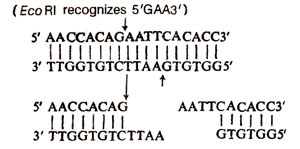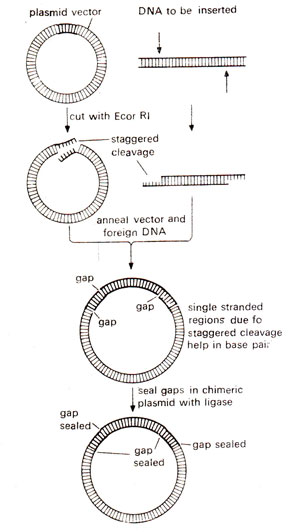Palindromes and staggered cleavage

Fig. 39.12. Staggered cleavage of a double stranded DNA fragment, producing single stranded sticky ends.

Fig. 39.13. Cloning of a DNA segment in a plasmid vector (e.g. pBR322) by staggered cleavages, both in vector DNA and foreign DNA to be cloned.
This technique has the advantage of regenerating two restriction sites (e.g., EcoRl site) in the chimeric DNA, so that the foreign DNA segment can be retrieved rather easily from the cloned copies of chimeric DNA by cleavage again with the same enzyme. There are also following disadvantages with this technique, (i) The two cleaved ends of a vector or of a foreign DNA may join end to end before getting inserted. Therefore, while isolating chimeric DNA, one will have to select chimeric molecules each having only a single insert. This can be achieved by separating molecules of different sizes by gel electrophoresis. (ii) The recognition site, particularly in the sequence to be cloned may not lie at a convenient position, so that sometimes only a part of the desired segment will be inserted.




